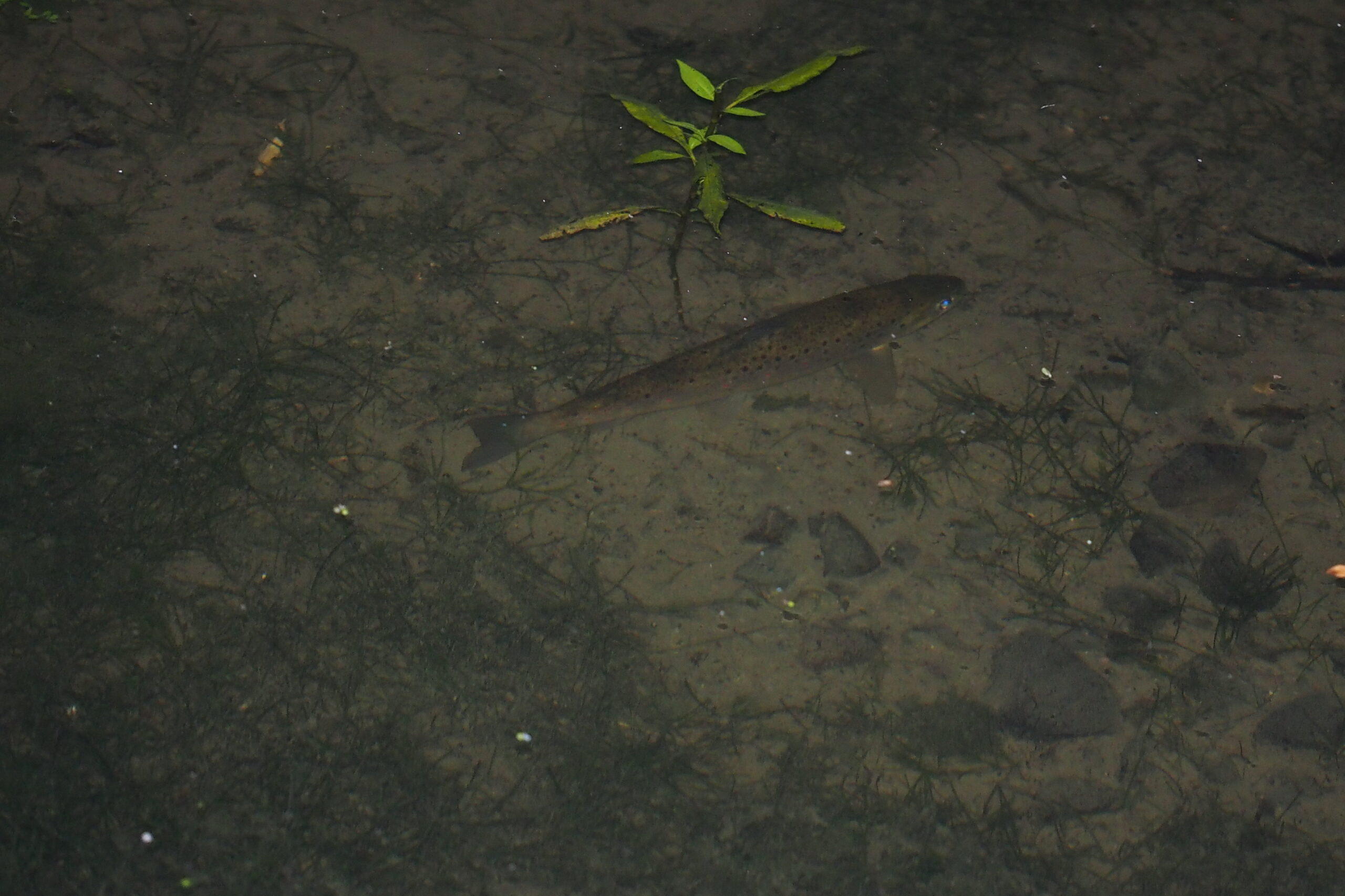Trout can see in the dark probably better than we can, but they lose the ability to discern color. They see the world in various shades of gray. Both brown and rainbow trout can easily feed by the light of the full moon.
I do not want to go into the science too much, but trout vision is determined by two types of cells, cones and rods. During the day, trout use their cone cells to detect color, at night the very sensitive rod cells take over giving them excellent night vision.
Do Brown, Rainbow or Brook trout see differently at night?
The following information is based on research by Russell B. Rader et al and published by the Monte L. Bean Life Science Museum at Brigham Young University.
Minimum light sensitivity of different species of trout
- Brown trout (Salmo trutta) ∼0.005 lux
- Brook trout (Salvelinus fontinalis) ∼0.005 lux
- Rainbow trout ( Oncorhyncus mykiss) ∼0.01 lux
- Cutthroat trout ( Oncorhynchus clarki bouvieri) ∼0.01 lux
If you are like me and are wondering just how bright 0.01 lux is, I will share that the full moon is typically between 0.05 to 0.1 lux in brightness. While a moonless clear night, is about 0.001 lux.
What does this mean, brown and brook trout see better in the dark, this it also backed up by general fishing knowledge that Brown and Brooks are more active at night.
This difference in light sensitivity allow both brown and brook trout to visually feed during all twilight conditions and under average night light conditions, in both open and shaded waters.
Rainbow, and cutthroat trout are restricted to feeding in relatively bright night conditions, for example at twilight or bright moonlit nights.
Can trout see UV at night?
Recent research has indicated that all trout lose their ability to sense ultraviolet light as they mature. UV sensitive cones in young trout change to blue light sensitive during their juvenile period.
While there is some debate, it does seem doubtful that trout, large enough to take a fly or spinner will still have the ability to see UV. For this reason, it is safe to assume that trout can not see UV at any time of the day including at night.
How does this knowledge affect trout fishing at night?
I do not believe it affects trout fishing much because sight is not the only sense trout use to find food. Trout (browns in particular) are well known to use their ‘lateral line’ to feel the vibration of prey as it moves through the water. They can use this sense to find food with next to no visibility.
In a similar fashion, trout can also use their hearing, to try and detect food as it approaches.
Finally, trout can use their sense of smell to locate prey, while I doubt they use smell much in flowing water, but trout certainly take advantage of it when patrolling for food in water with little current.
With this knowledge, when fishing in very dark conditions I feel it is important to fish lures or streamers with plenty of action to generate noise and vibrations. This allows the trout to ‘feel’ and hear the lure as it moves through the water.
As for lure color, when night fishing I nearly always prefer dark colors. Black, olive or dark blue, these dark colors contrast strongly against the relative brightness of the night sky allowing them to stand out. At night, trout are more likely to be striking at the silhouette than any fancy pattern.

